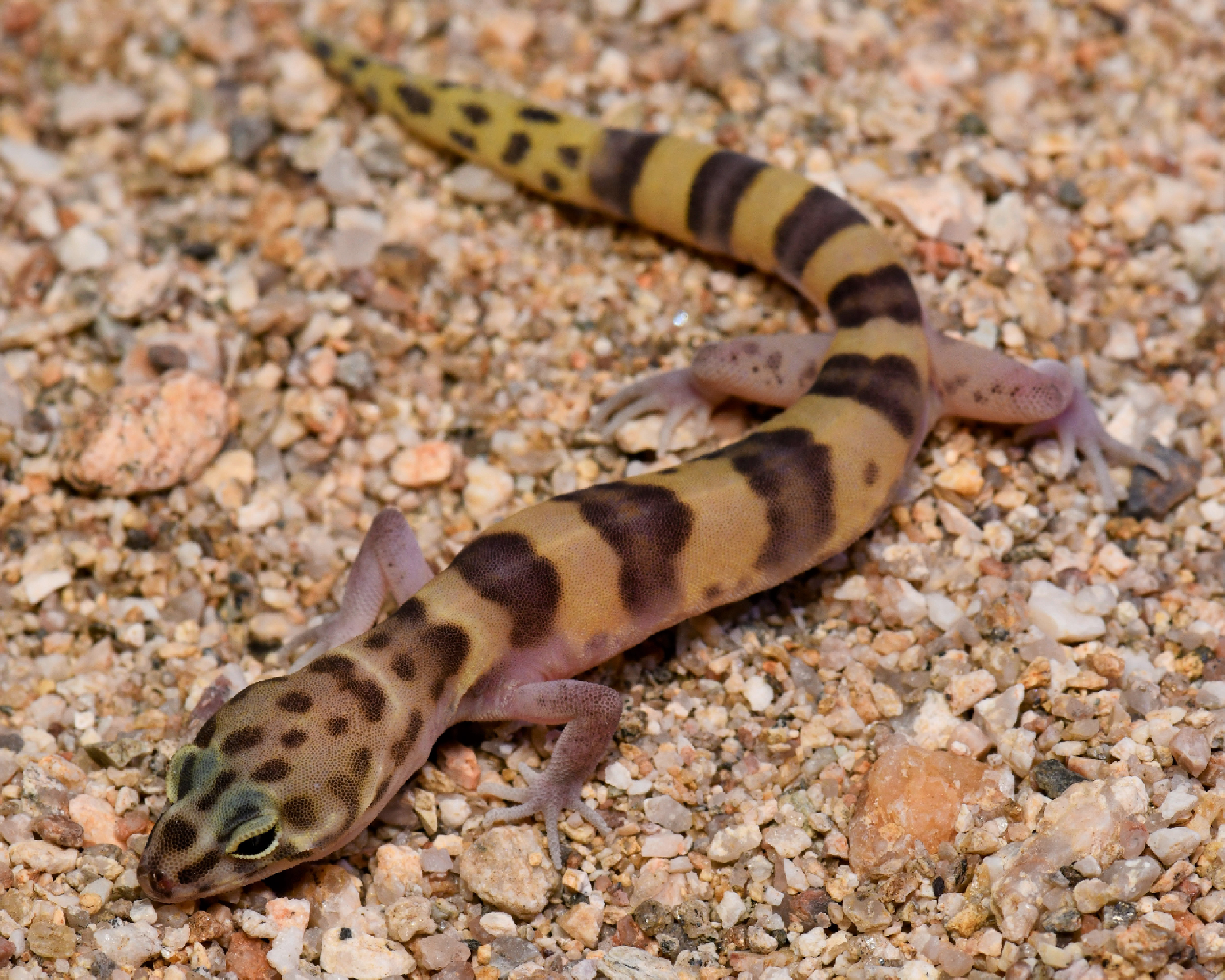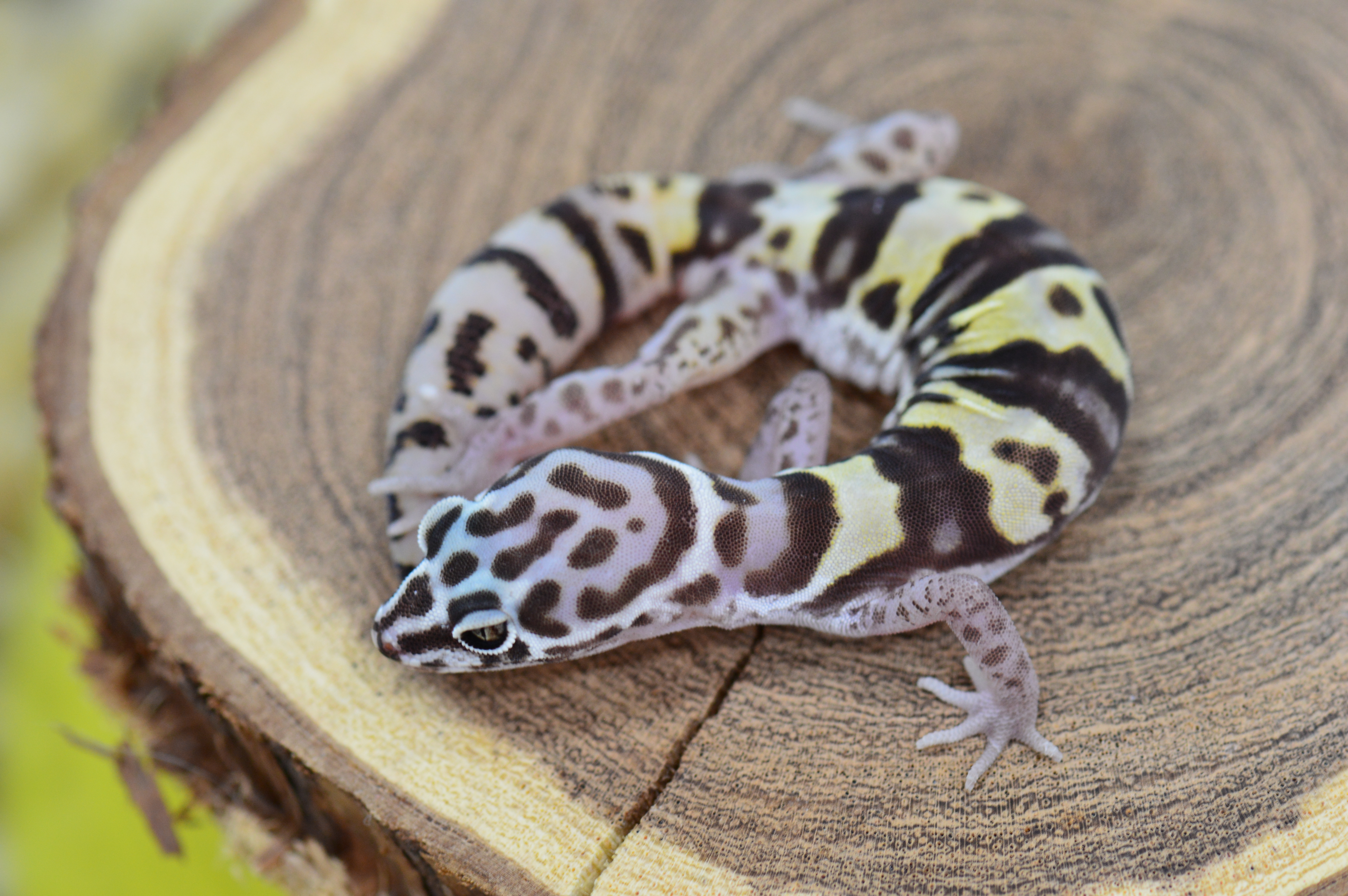Western Banded gecko (Coleoynx variegatus)
The western banded gecko, scientifically known as Coleonyx variegatus, is a small and intriguing reptile species found in arid regions of the southwestern United States and northwestern Mexico. It belongs to the family Eublepharidae and is a member of the genus Coleonyx, which encompasses several gecko species.
 The western banded gecko possesses a unique appearance characterized by its small size and distinctive coloration. It typically measures around 3 to 4 inches (7 to 10 centimeters) in length, with a slender body and a long tail. The gecko's body is covered in small, granular scales, giving it a velvety texture.
The western banded gecko possesses a unique appearance characterized by its small size and distinctive coloration. It typically measures around 3 to 4 inches (7 to 10 centimeters) in length, with a slender body and a long tail. The gecko's body is covered in small, granular scales, giving it a velvety texture.
This gecko species is named for its striking coloration and banded patterns. The dorsal surface of the western banded gecko is typically brown, gray, or olive, adorned with a series of dark transverse bands or stripes. These bands can vary in thickness and intensity, providing effective camouflage against the gecko's natural habitats of rocky deserts and arid grasslands. The ventral surface is usually lighter in coloration.
The western banded gecko has large eyes with vertical pupils, a characteristic trait of geckos. Unlike most gecko species, the western banded gecko has eyelids. These eyes have excellent vision, particularly in low-light conditions, enabling them to hunt for prey during the night. Like other gecko species, they lack adhesive toe pads and instead rely on claws and specialized scales to climb rocks and other surfaces.
Being nocturnal, the western banded gecko is most active during the night, emerging from its daytime shelter to forage for food. Its diet consists primarily of small invertebrates, including insects, spiders, and scorpions. It uses its keen sense of smell and sight to locate and capture prey items.
Reproduction in the western banded gecko typically occurs during the warm months of the year. Males engage in territorial behaviors, such as head bobbing and tail waving, to establish and defend their territories. Females lay one or two small, soft-shelled eggs in shallow burrows or beneath rocks. The eggs hatch after an incubation period of several weeks, and the hatchlings emerge as miniature versions of the adults.
The western banded gecko has evolved to cope with the challenges of arid environments, where water availability is limited. It possesses specialized adaptations to conserve water, such as the ability to lick dew or moisture from surfaces and a behavioral trait known as aestivation, where it enters a state of dormancy during hot and dry periods.
Due to habitat loss and fragmentation, as well as collection for the pet trade, the western banded gecko faces conservation concerns in some regions. Efforts to protect their natural habitats and regulate collection are vital to ensure the preservation of this captivating and ecologically important species.


